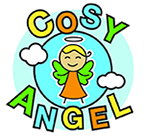Parents spend a lot of time worrying about their babies and toddlers feeling too cold. Infants and small children are wrapped up in layers and layers of thick clothing when it’s cold outside. But, many parents forget that the dangers of overheating in the summer months can be extremely serious as well.
During hot weather, babies and toddlers are at risk of getting sunburnt, getting heatstroke, or becoming dehydrated. In extreme circumstances, the body temperature of the child becomes extremely high and the body is unable to cool itself. Heatstroke can lead to straining of lungs, brains, kidney and liver, and it can even be life threatening,
The fact is that babies and small children are more susceptible to the effects of heat than older children and adults. Young ones need to therefore be carefully monitored during hot weather to ensure that they stay cool, safe, hydrated, and sheltered from the blistering sun. This is especially important to note for families who may be going on vacation to an unfamiliar location where temperatures run much higher than back home.
This is a quick and easy checklist for parents to follow to ensure that their precious baby or toddler is protected from the dangerous consequences of exposure to hot weather.
Limit Exposure to Sun
During daytime activities, sun exposure should be limited to just a few minutes between 10:00 am and 4:00 pm. This is when the sun is strongest. If your baby isn’t accustomed to hot weather, take baby steps to slowly introduce him/her to the hot outdoors. If you feel comfortable outside, chances are your baby is comfortable too. If you feel hot, uncomfortable or sweaty, then your baby must be feeling the same, so quickly find some shady cool place for him/her.
If you are about to expose your baby to the sun for a prolonged time, it is prudent to make them wear a UV protection sun hat. This would limit the quantity and intensity of sun rays that hit the baby’s skin directly. Another thing you can purchase is a UV sun tent to keep your baby in during long outdoor events. Try to protect your baby’s skin from direct exposure to the sun’s rays.
Shelter Baby On-the-Go
Consider getting a large canopy for your baby’s pram/stroller. Such canopy extenders keep the baby shaded and cool when outdoors in the sun. Do not try to cover the stroller or car seat with a blanket or thick cloth for sun protection; such fabrics will cause baby overheating and suffocation.
No Overdressing
On hot days, do not overdress the baby. Ensure that they are only wearing a thin material, light-colored, short-sleeved outfit like a onesie. Try to keep your baby out of the direct sun wherever possible. You can dress your baby in a brimmed hate to further protect her head, face and neck.
Recognizing Signs of Overheating
Your baby or toddler will not be able to tell you if they’re feeling hot and uncomfortable. This is why it’s important for you to stay on the lookout for signs of heat-related conditions and heat exhaustion. Some baby overheating warning signs are:
- Being very warm to the touch
- Profuse sweating
- Extreme thirst
- Acting lethargic or fatigued
If your baby exhibits any of these signs, take him/her immediately to a cool place, undress her, and sponge her body down with cool (but not cold) water. Give your baby small sips of water or breast milk or formula. If symptoms seem severe or keep worsening, call the pediatrician at once.
Prevent Dehydration
Keep fluid readily available for your baby, but do not overdo on feeding him/her liquids. If you live in a particularly hot climate, you can consider asking the pediatrician about oral rehydration solutions for replenishing lost vitamins. Four quick ways to tell if a baby needs more daily fluid are if the baby;
- Has less than 6 wet diaper changes per day
- Has a dry and tacky mouth
- Cries with only few tears
- Is less energetic and playful.
Lastly, it is important to remember that your baby can develop a heatstroke due to overheating indoors as well as in the sunny outdoors. If your baby happens to be asleep in a room that’s too hot, he/she is in danger of overheating and getting a heatstroke. As such, you must always be vigilant that your baby is not getting overheated anywhere.
What are the ways in which you protect your precious little one from the dangerous hot weather? Share your tips and experiences in the comments below!
